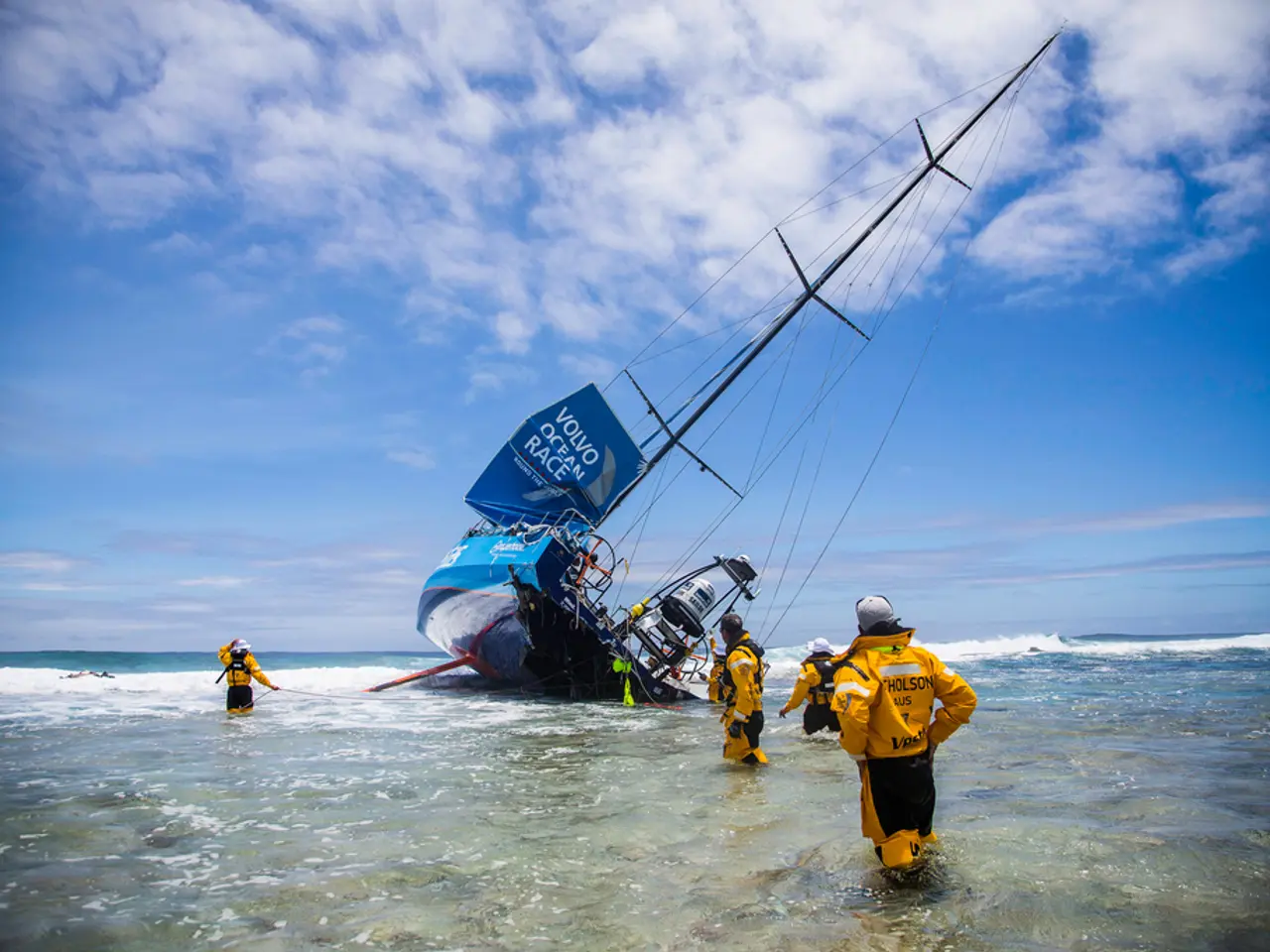Which European nations see the highest number of drowning deaths?
In the European Union, drowning remains one of the top causes of mortality for children and young people aged one to 24 years [1]. The World Health Organisation (WHO) considers drowning a preventable cause of premature death, yet the issue persists, especially during the summer months [2].
According to the latest data, more than 4,800 people died due to drowning in the EU in 2022, marking a decrease of 3.9% compared to the previous year [3]. The highest number of fatalities was reported in France, followed by Germany, Poland, and Romania [4]. However, the WHO's recommendations do not provide information on the countries with the lowest numbers of drowning deaths.
The key factors for drowning among men and children in the EU include higher exposure and risk-taking behaviors among men, and for children, drowning often occurs in private pools and other bodies of water [1][3][4]. To prevent drowning fatalities, the WHO recommends teaching water safety, safe rescue skills, and providing safe places away from water for preschool children [5].
Moreover, the WHO suggests installing barriers to control access to water, training bystanders in safe rescue and resuscitation, and enforcing the use of life jackets in maritime transport [5]. Knowing how to swim does not necessarily reduce a child's risk of drowning [6].
Socioeconomic and cultural factors were recognized as key contributors to the disparity in drowning rates [6]. A 2024 study identified belonging to minority ethnic or migrant groups as a risk factor for drowning, indicating the importance of tailored prevention programs [6].
Prevention measures focus on a combination of education and infrastructure improvements. Teaching children and adults basic swimming skills, water safety, safe rescue techniques, and resuscitation is essential [3]. Providing safe play areas away from water for young children and installing physical barriers (e.g., fences) around private pools to restrict unsupervised access reduce risk [3]. Enforcing life jacket use in maritime activities helps lower drowning risks [3].
Successful campaigns and better facilities at beaches and pools have contributed to the decline in drowning deaths in the EU since 2011 [1]. In summary, reducing drowning rates in the EU, especially during summer, requires combining education on swimming and water safety, controlled access to water bodies, proper use of personal flotation devices, and focused public health interventions targeting vulnerable groups like men and children.
References:
[1] European Centre for Disease Prevention and Control. (2021). Drowning in Europe: A Public Health Problem. [Online] Available at: https://www.ecdc.europa.eu/en/drowning-europe-public-health-problem
[2] European Commission. (2020). Factsheet: Drowning. [Online] Available at: https://ec.europa.eu/info/publications/factsheet-drowning_en
[3] World Health Organisation. (2020). Drowning Prevention. [Online] Available at: https://www.who.int/violence_injury_prevention/violence/drowning/en/
[4] European Union Statistical Office. (2022). Accidental deaths in the European Union. [Online] Available at: https://ec.europa.eu/eurostat/web/products-eurostat-news/-/DS-2022-0801
[5] World Health Organisation. (2019). Guidelines for Safe Recreation: Water Recreation. [Online] Available at: https://apps.who.int/iris/handle/10665/329068
[6] European Centre for Disease Prevention and Control. (2022). Drowning: Risk factors and prevention. [Online] Available at: https://www.ecdc.europa.eu/en/drowning-risk-factors-and-prevention
In light of the World Health Organisation's guidelines, promoting fitness-and-exercise, health-and-wellness through nutritional education and regular exercise could potentially improve overall health and reduce the risk of drowning by enhancing strength and mobility. On the other hand, engaging in sports such as swimming can help individuals learn water safety skills, which may further reduce the risk of drowning.
Furthermore, with a better understanding of the socioeconomic and cultural factors contributing to the disparity in drowning rates, science and public health research can help develop tailored prevention programs for diverse communities, such as those belonging to minority ethnic or migrant groups, who are identified as being at higher risk.




